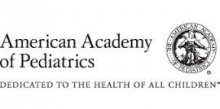
Resources Citation

American Academy of Pediatrics
Association for the Treatment of Sexual Abusers - October 30, 2012
Davis, T. N., Machalicek, W., Scalzo, R., Kobylecky, A., Campbell, V., Pinkelman, S., Chan, J. M., Sigafoos, J., (2015). A Review and Treatment Selection Model for Individuals with Developmental Disabilities Who Engage in Inappropriate Sexual Behavior. Behavior Analysis Practice. doi:10.1007/s40617-015-0062-3
Brown-Lavoie, S. M., Viecili, M. A., & Weiss, J. A. (2015). Sexual knowledge and victimization in adults with Autism Spectrum Disorders. Journal of Autism and Developmental Disorders, 44, 2185-2196
Blanchett, W. J. & Wolfe, P. S. (2002). A review of sexuality educaiton curricula: Meeting the sexuality education needs of individuals with mdoerate and severe intellectual disabilities. Research and Practice for Persons with Severe Disabilities, 27, 43-57.
Martinson, F. (1997). Sexual development in infancy and childhood. In G. Ryan & S. Lane (Eds.), Juvenile sexual offending: Causes, consequences, and correction (Rev. ed., pp. 36-58). San Francisco: Jossey-Bass.
Linblad, F. (1995). Preschoolers' sexual behavior and daycare centers: An epidemiological study. Child and Family Social Work, 19, 569-577.
Larsson, I., Svedi.n, C. G. & Friedrich, W. N. (2000) Differences and similarities in sexual behaviour among pre-schoolers in Sweden and USA. Nordic Journal of Psychiatry, 54, 251-257.
Larsson, I. & Svedin, C. G. (2001). Sexual behaviour in Swedish preschool children, as observed by their parents. Acta Paediatrica, 90, 436-333.